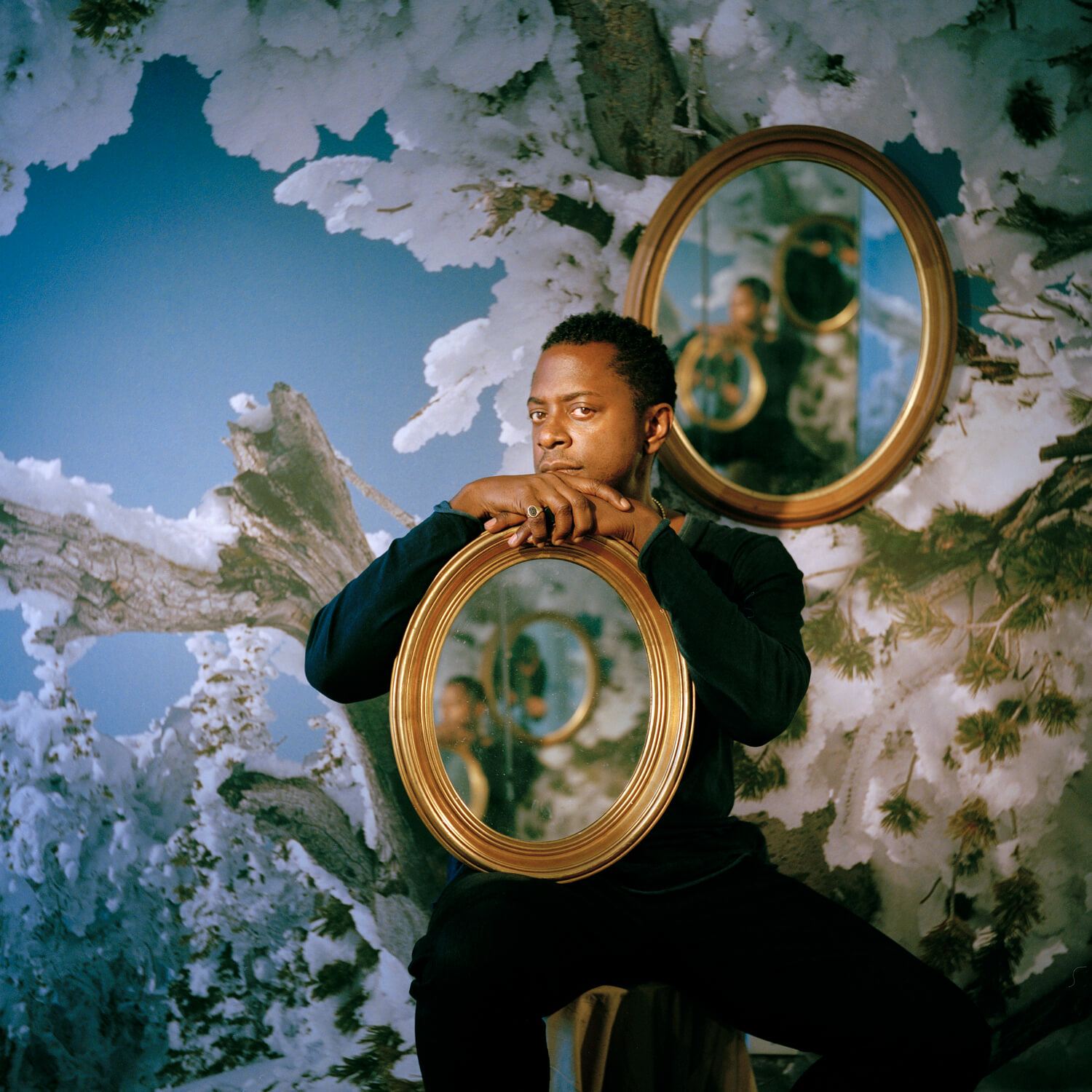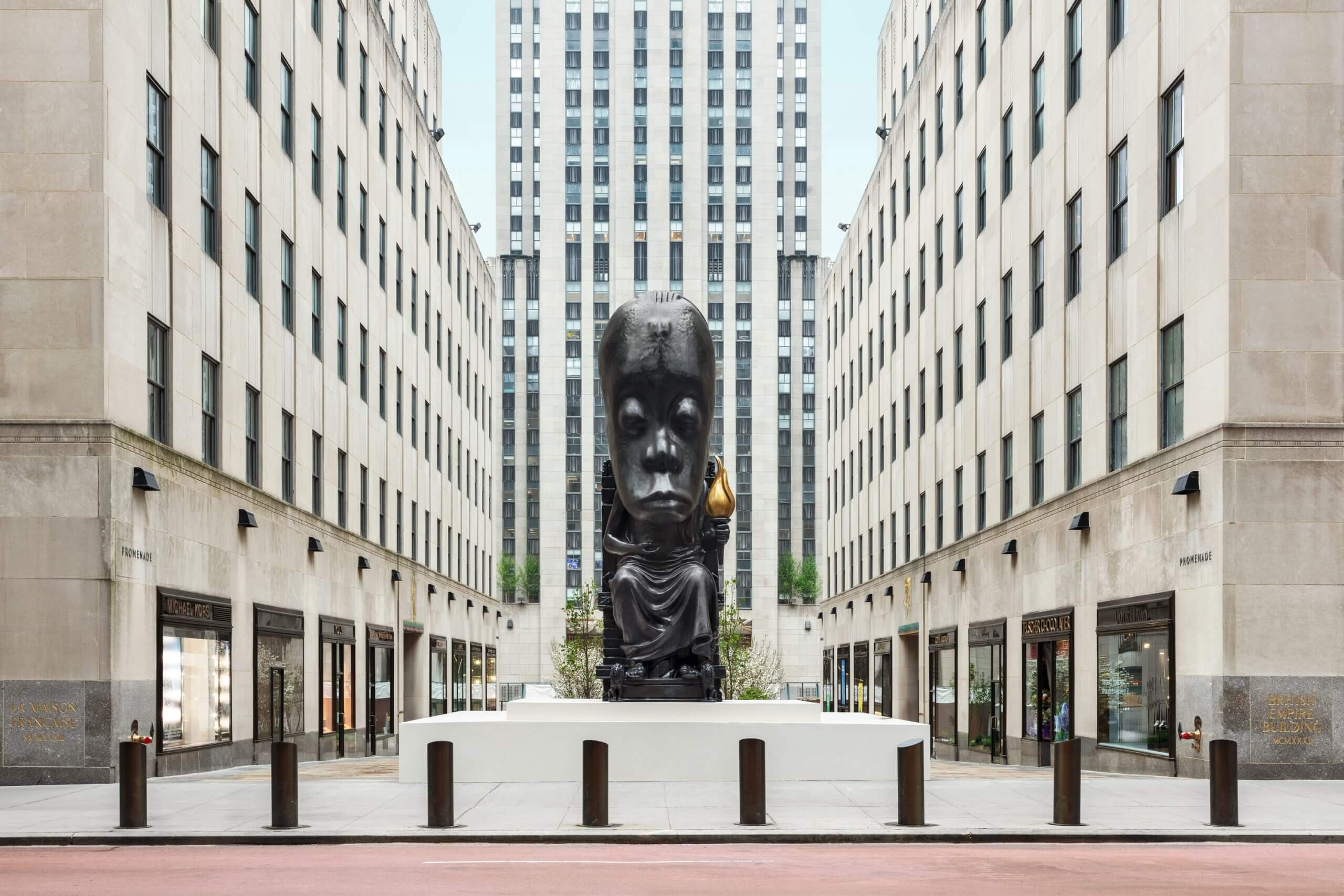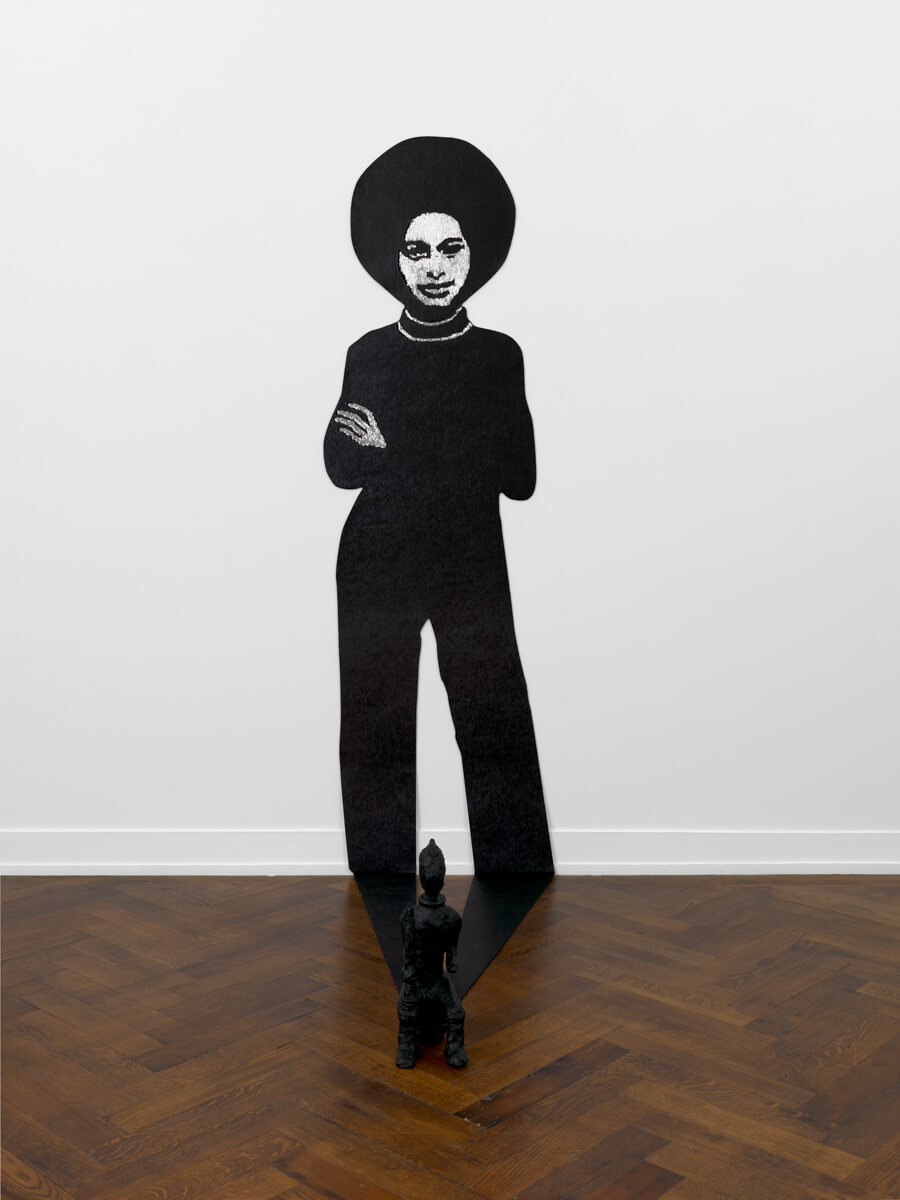Sanford Biggers: The FRONTRUNNER Interview

Between symbolism and history, his practice is a mix of elements ranging from marble to fabrics, which reinterpret facts of the past through a contemporary lens in paintings, sculptures, installations, videos, films and performances. African-American artist Sanford Biggers’ (b. Los Angeles, 1970) aim is to invite the viewer to experience a story as an active part of his work, where new channels are opened, identifying oneself to reach an understanding of the past in a contemporary way. Indeed, his art refers to African-American ethnography through music, urban culture, religion and spirituality, all essential for his production. His works test the collective imagination and highlight the message through the medium, through his form. Since 2014, inspired by some quilts received from the descendants of slave owners, Biggers somehow abandons painting made on a classic support, to devote himself to painting on quilts. His first embroidered works were installed in 2009 in the Mother Bethel African Methodist Episcopal Church in Philadelphia.
Biggers earned his BA from Morehouse College in Atlanta (Georgia), an MFA from the School of the Art Institute in Chicago, and in 1998 attended the Skowhegan School of Painting and Sculpture. Among his first successes is the work “Mandala of the B-Bodhisattva II”, which was included in the exhibition Freestyle, curated by Thelma Golden at the Studio Museum in Harlem in 2001. This was followed by exhibitions throughout the world, at the Whitney Museum, Tate Modern, and the Brooklyn Museum. The work of Biggers – who was also an Assistant Professor of Visual Arts at Columbia University and was named the Dr. Martin Luther King, Jr. Visiting Professor and scholar in the Department of Architecture at MIT – is characterised by meditation and improvisation. He has won numerous awards such as the Art Award from the American Academy of Arts and Letters (2018), he was inducted into the New York Foundation for the Arts Hall of Fame the following year, and last year received the 26th Heinz Award for the Arts.
In this exclusive interview coinciding with a new exhibition opening in Hong Kong with the Massimo De Carlo Gallery, Biggers (who lives and works in New York) tells FRONTRUNNER about his first steps. Let’s start from the origin.

Photo credit: Matthew Morrocco
You were born in Los Angeles, you lived in Japan for a long time, and then in Europe. What kind of relationship do you have with Africa?
I’ve visited several countries in Africa for various projects and research, but I’d say my relationship started as a child growing up in an Afrocentric community and being inspired by books, music, and events throughout the African Diaspora. I also knowingly idealised aspects I’d learned about different African cultures as an alternative to the social/racial dysfunction and pathology I saw playing out in the governmental policies and legacies of the US.
How is a Sanford Biggers work conceived?
Wherever I am, I try to be very sensitive to the things I encounter visually, sonically, culturally, and historically. I am constantly inspired by our species’ ability and need to create and find myself wanting to contribute to that trajectory by making artworks that acknowledge or riff off of the past while adding my idiosyncratic viewpoint. I think in opposites ie, “high” and “low,” monumental and miniature, tragic and comedic, highly considered and improvised, permanent and ephemeral. My works usually come from combining these elements and constant material and contextual exploration.

Oracle (2021)
Bronze
717.93 x 213.97 x 310.13 cm
Copyright ©Sanford Biggers and Art Production Fund
Courtesy of the artist and Art Production Fund
Photo credit: Daniel Greer
In 2021, you were the first artist invited by the Rockefeller Center in New York City to create a multimedia exhibition. How was Oracle project installed at the Fifth Avenue entrance to Channel Gardens?
The Oracle project was the result of a decade long dialog with Art Production Fund converged with creating a new body of work entitled Chimera, which I began at the American Academy in Rome, where I researched the repurposing of sculptural and architectural ruins, or “spolia”, from various fallen empires. The Chimeras are allegorical marble sculptures that combine and blur classical and traditional sculptural forms from various world cultures. Most recently, I’ve been focused on African and European objects to expand our understanding of the symbols and narratives of power, beauty, and influence.
After Art Production Fund commissioned me to do the monumental public work, it took close to two or three years for us to land on a location and design. But once Rockefeller Center became an option, I knew a large Chimera would find and provide context to the other monumental mythological and symbolically rich objects found throughout the campus.
About the Moon Medicin project, how was that created? You are, as I understand, the creative director of a multimedia band.
Moon Medicin is a multimedia collective re-righting history through sound, moving images, and live performances. Moon Medicin originated in 2007 after Performa commission me to direct and produce “The Somethin’ Suite”, which was a re-imagination of an early 20th century Minstrel-Vaudeville show with an ensemble cast of performers and musicians including myself on piano, Saul Williams, Esthero, Shae Fiol Jahi Sundance, Martin Luther MacCoy, Imani Uzuri, and CX KiDTRONiK.
How important are music and religion for you?
I think music and religion share an essence of communion and release that inspire my creative process and philosophy, but on a deeper level, I’ve never been that interested in the individual distinctions between music, religion, art, dance, poetry, etc. I think all of these fields are crucial to our journey, but I’m more interested in where and how those discreet forms can combine and reconfigure into more explorative and nuanced forms of expression when they are not limited or sequestered by our categorisation of them.
As in “Lotus” and “Mandala of the B-Bodhisattva II”, among the most recurrent elements in your production are mandalas. How are they conceived, and where do you get the inspiration to make them?
For me, a mandala is a form of meditation. Circles are universal archetypes and represent cycles, wholeness, movement, transcendence, time, etc, and they are both syncretic and powerful. The performers in Mandala of the B-Bodhisattva II (2001) express the mandala through the circular motions of breakdancing, similar to the movement of monks using singing bowls to meditate. In comparison, Lotus (2007) utilises diagrams of slave vessels as pedals of a lotus to create a seven-foot glass disc as a means to invite contemplation and transcend history. It’s been an ongoing muse and motif, and I’ve been engaging with it for many years, whether it is present in the artwork or part of the process.

Redeemer (2021)
Sequins, epoxy clay, acrylic
243.8 × 81.3 cm
Small figure size: 36.8 x 11.4 x 6.3 cm
96″H x 32″W x 3/8″D + floor shadow in (2) triangular pieces 12″ x 60″ x 3/16″
Copyright ©Sanford Biggers and Massimo De Carlo
Courtesy of the artist and Massimo De Carlo (London, Milan, and Hong Kong)
Photo credit: Todd-White Art Photography
What are your next projects?
I’m working on opening my first solo exhibition in Hong Kong with the Massimo De Carlo Gallery, opening on May 5th. This exhibition will feature new marble sculptures and quilt works. I’m also in the process of, a few large-scale commissions in Cambridge (Massachusetts), Harlem, Orange County (California), and Toronto.
Responses